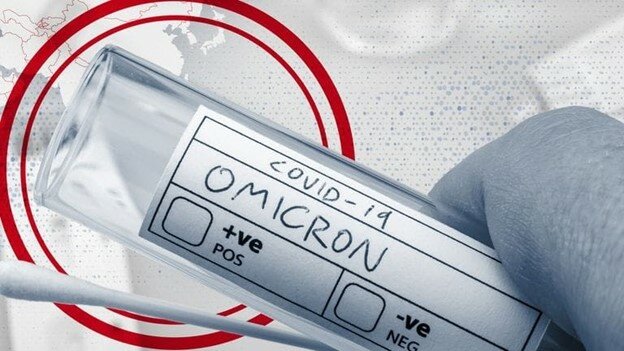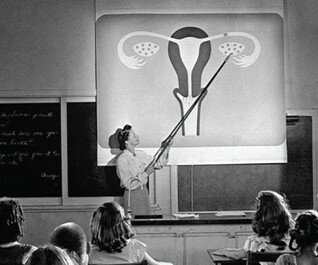A few weeks after its discovery in South Africa, the emergence of the new COVID-19 variant Omicron has already taken its toll. To this date, there have been five variants of COVID-19 discovered including the new Omicron (B.1.1.529) variant being responsible for 95% of COVID-19 cases in the U.S and the majority of COVID cases worldwide.
The frequent appearance of such variants is related to the genomic nature or composition of the virus. Being an RNA virus, COVID-19 is subject to frequent mutation due to the instability of its genomic composition consequently leading to the frequent appearance of new variants each having certain distinctive properties. Although researchers are racing to track and understand the Omicron variant, its extremely high transmissibility and the patchy procedure of detecting it in patients has become an obstacle to this process.
While what has been described above is the general case of how variants appear, the appearance of the Omicron variant specifically in South Africa is hypothesized to be caused by two main reasons. A group of South African researchers state that the appearance of the new variant might be linked to HIV patients. Approximately eight million of the South African population are diagnosed with HIV and one-third of them are not taking the appropriate medication. Such immunocompromised patients are unable to combat the virus effectively, which causes it to linger inside their bodies for a prolonged period. Thus, this gives the virus enough time to mutate several times inside the body. Such a case has occurred where a South African woman was diagnosed continuously for COVID-19 for more than 8 months and in the process, the virus has been found to have mutated 30 times. Furthermore, a population that is only 27.1% fully vaccinated allows the virus to be transmitted perfectly and similarly allows it to replicate more on a much larger scale and time frame, consequently picking up numerous mutations. In brief, such a high density of immunocompromised patients coupled with a low percentage of the vaccinated population has created the perfect grounds for the virus to mutate into a new potent variant, the Omicron Variant.
Omicron’s severity is being studied daily and the preliminary research points that it’s a less severe variant while being extremely transmissible. In terms of symptoms, Omicron differs in the absence of loss of taste or smell which is frequently associated with previous variants. In addition, the appearance of gastrointestinal symptoms such as nausea and diarrhea were common when it was first discovered in South Africa but are absent with Omicron.
At this moment, however, cough and more notably upper respiratory tract infections such as nasal congestion and scratchy or sore throat are recognized as the primary symptoms corresponding to the Omicron variant. Research conducted on the severity of the Omicron variant by The University of Hong Kong points out that Omicron spreads and infects bronchial tissue, present in the nose and throat, 70 times more effectively than the delta variant after 24 hours of infection. On the other hand, it has been found to be ten times less effective in infecting lung tissue. Consequently, the virus is being associated with lower lethality and severity. In other words, the Omicron variant does not “dig as deep” as other variants which cause much more severe damage in the lungs. Instead, it confines itself in the upper respiratory tract causing milder symptoms. Furthermore, preliminary analysis conducted in the U.K and South Africa pointed out that individuals are 50-70% less likely to be hospitalized if they are infected with the Omicron variant compared to the delta variant. Another group of researchers at Imperial College in London have found that “patients with PCR-confirmed Omicron are 40-45% less likely to spend a night or more in the hospital compared with the Delta variant”.
It is important to note that such preliminary results might be a glimmer of hope for all of us but still much more data is required to understand how severe the virus truly is and how different it can be on a wider timescale and in a larger population. Until then, precautions undoubtedly still must be taken as the death toll is still increasing.
The effectiveness of the Omicron variant multiplying in bronchial tissue is the key to how fast it can spread. The explosive growth of the Omicron variant, which can be seen as a sharp peak in global COVID-19 case statistics, is related to the spike protein on its surface, allowing it to enter bronchial cells more effectively than lung cells. This high concentration of the variant in the upper respiratory airways renders it much more likely to be inhaled, coughed, or sneezed out from the infected person and be transmitted more effectively to other people. This is confirmed by the results of a study published by researchers at Michigan State University claiming that Omicron could be over 10 times more contagious than the original strain or about 2.8 times more contagious than the Delta variant.
With 50.3% of the world population or 3.92 billion being fully vaccinated with two doses, a new question arises: How will vaccines fare against the new variant? Early data shows that vaccines, in general, have lower efficiency in preventing infection caused by the Omicron variant. A study published by the Journal of Chemical Information and Modeling has stated that Omicron may have an 88% likelihood to escape current vaccines. Such a decreased efficacy can also be seen in monoclonal antibody therapy. Pfizer and BioNTech have already made statements themselves confirming this reduced efficacy in people vaccinated with two doses. Contrary to the above-published findings, Pfizer claims that 80% of the Omicron variant’s epitopes, the structures recognized by antibodies, can be still recognized by the immune system – or more precisely, by CD8+ cytotoxic T-cells. Booster doses or third doses have been found to hold up relatively well against the new variant. According to Pfizer, a booster dose might be 25 times more effective in preventing infection caused by Omicron compared to having two doses. Booster or third doses by other vaccines have been shown to increase the effectiveness of protecting against infection by 75%.
Nevertheless, a study published by Columbia University has stated COVID only needs a single or two mutations to become “completely resistant to current antibodies” where “even a third booster shot may not adequately protect against omicron infection”. This might be true when looking at the low effectiveness of Johnson Johnson, Sputnik, and Sinopharm vaccines. However, the case is different when it comes to mRNA vaccines such as Pfizer-BioNTech and Moderna. In short, more data is required to evaluate how much vaccine efficacy has taken a hit in preventing severe infection.
While it is true that preliminary data might show that vaccines are decreasing in their efficiency in preventing the infection, the severity of symptoms associated with the infection depends solely on vaccination status. In other words, vaccines are still very effective in preventing hospitalization, severe symptoms, and death.
At the time of this publication, much of the information pertaining to the effectiveness of vaccination can be summarized in the following points:
- Vaccinated with 2-dose Pfizer Vaccine:
- 30-40% protection against infection
- 70% protection against hospitalization
- More fatigue, coughing, headache, sinus pressure and sinus pain compared to those vaccinated with a booster shot.
- Vaccinated with 2-dose Pfizer Vaccine and an additional Pfizer Booster
- 75% protection against infection and 80-90% protection against severe disease
- 88% protection against hospitalization
- Mild symptoms include sore throat, muscle pain, and fatigue.
- Vaccinated with Moderna Vaccine
- 72% protection against infection provided by 2 doses of vaccine
- 88% protection against hospitalization provided by 3 doses of vaccine
- Range of symptoms is closely similar to that of Pfizer and BioNTech vaccines as well as dependent if two or three doses were administered due to both of them being mRNA vaccines.
- Vaccinated With Johnson & Johnson, Sinopharm, and Sputnik vaccine
- Study published by South African researchers found that little or no antibodies were produced against omicron. Thus, a booster shot is recommended.
- Fatigue, weakness, fever lasting for a few days, shortness of breath, and cough were common after infection with Omicron Variant.
In a time when this variant has dominated the global pandemic’s course, what implications would this have on our country, Lebanon? It is essential to have a solid governmental structure that can be equal to the immense responsibilities that come with facing a variant as contagious as Omicron. This problem resonates too well with the Lebanese people as it has been common to have ministers who had no qualifications related to their positions prior to appointment being chosen to fill a specific political quota.
It can be said that Minister Hassan was the one responsible for expediting the delivery of the COVID-19 vaccines to Lebanon within a set of highly challenging circumstances. While many third-world countries still have not commenced proper vaccine rollout even 23 months into the pandemic, Lebanon is already 11 months into its vaccination campaign. When we take into consideration that the nation is experiencing the worst economic crisis of the region’s recent memory, it could have been assumed that we do not have any ability to immunize the community, yet we have had a golden opportunity to do so.
Besides the Coronavirus, Lebanon faced an economic downfall that affected many aspects of the Public Health sector with medicine shortages jeopardizing the lives of hundreds of thousands of vulnerable patients. In addition, the country has witnessed a rather low COVID-19 vaccination rate as only 34% of the population has received any dose as of January 8th, 2022. Moreover, just under 5% have received their 3rd dose which is crucial to defend the body from the widespread variants of Delta and Omicron. This shows that there is still a lot of work left to do by our new Ministry of Public Health. However, the appointment of Minister Abiad seems to bode well on the future of this defense campaign.
Evidently, Minister Abiad’s primary tasks upon appointment were leading the country’s Coronavirus defense and protecting the healthcare sector from the turmoil the nation is facing. However, there is no denial that the sector has been utterly exacerbated in every way imaginable, and it hurts to consider that the worst of it may not even be past us. The country is facing its second winter COVID-19 case surge, mostly consisting of Omicron cases, having witnessed a phase during 2020-21 where 90% of ICU beds were occupied by COVID-19 patients of past strains. Thankfully though, the situation is much different this year due to the vaccination campaign we have had during 2021. As mentioned above, vaccinated individuals face much less severe symptoms upon infection which drastically reduces the risk of hospitalization. This means that even with daily cases being at an unprecedented peak, the number of hospitalizations and deaths due to the virus are much lower than one would expect, even if the prevalent variant is less deadly due to the reasons discussed previously. As reported by the Ministry of Public Health on December 23rd, 2021, in its daily COVID-19 reports, 100% of Coronavirus ICU patients in Lebanon were unvaccinated. Then, why must we be careful of the healthcare system being overloaded even when vaccinated? The answer lies in the extreme transmissibility of the Omicron variant. While vaccinated individuals are protected against the virus, these individuals may still infect unvaccinated people who may suffer the worst of the virus.
Another source of exacerbation is the unprecedented shortage of healthcare workers in Lebanon. An idealistic solution for this matter would be to alleviate the pressure from the sector by having an efficient COVID-19 vaccination campaign that would help limit the virus’s spread. We know that vaccines may not completely affect the transmissibility of the virus, yet it must be noted that figures suggested an 80% fully vaccinated nation would bring us back to normal life in early 2021. However, the practical difficulties in that theoretical hypothesis led to a stagnant reality a year onwards. Many factors come into play, yet the most prominent one is that our vaccination rate is so low compared to the target. Even after 11 months of vaccination, we are not even halfway there statistically (27.5% received two doses compared to the 80% needed). In addition, the slow campaign has failed to keep up with the emergence of new variants which require new vaccines and booster shots. This is partly due to the healthcare worker shortage as well as the low availability of vaccines throughout the year.
The quantity of vaccines delivered is still well below the required target even with the increased availability of doses as of late 2021. This could be attributed to the personal choices of the nation itself. Even with the nation facing the fastest spreading variant known so far, sections of the community decided to display their ignorance and lead a protest against ‘vaccines’ in general, but more specifically the decisions of MOPH regarding public administration employees’ vaccination status.
In December 2021, several decisions were issued by the Minister of Health to face the coming winter surge amid the arrival of Omicron with the first two cases imported from an African flight. Some of the mandates issued included implementing a curfew for unvaccinated citizens, declaring mandatory full vaccination of all public sector employees including those in education, health, and tourism by January 10th, 2022, and increasing the length of the Christmas vacation to give more time for students to get their booster shots. However, as promising as these new rules sound, one must evaluate their true purpose if they are not implemented properly. For example, very few restaurants and public venues required a vaccination card for entry over the festive season, crowds were seen in Downtown streets while Omicron cases were at their highest, and many parents are still speculative concerning vaccinating their children, rendering the extended break as a mere stop-gap for the infected school personnel to recover and not require a return to online learning. In addition, there have been no significant efforts to monitor the vaccination status of those going out past the set curfew, and it seems that the rules were bent again in a classically Lebanese manner. Going back to the education system, Minister Abiad has insisted on keeping schooling on campus regardless of the current Omicron spike given the “careful precautions taken in the school system.” Clearly, many schools have failed to adhere to that so far with many videos surfacing of mass gatherings in playgrounds of many public and private schools. Even though most students are vaccinated, it’s no excuse to let our guard down. Even if the Omicron variant is not as deadly as other variants, it is still not the time to return to our “normal” lives when more than 60% of the nation has not received two doses of the vaccine.
It must seem comical to remember our viewpoint concerning the COVID-19 pandemic’s progression only one year ago. Back then, news of vaccine doses finally being approved to be used in various countries around the world brought hope of a return to normal life by the end of 2021 when most of the population was expected to have been immunized. However, things have obviously played out in a different manner altogether given the laughable inequality between countries’ vaccination programs. It remains true that no one is safe until everyone is given the nature of this virus. Simply, it will mutate wherever it finds room to do so, meaning that even if first-world countries achieve a 100% booster vaccination rate, variants that evade existent vaccines will emerge.
In retrospect, hopes for the pandemic’s culmination during 2021 were premature and Omicron proved to be a lesson for the wealthy elite in pandemic management which we hope will be taken more seriously than previous case surges and vaccination campaigns. We might not witness the end of this pandemic until 80% of the global population is immune against the prominent variant of the time either through a targeted vaccine or contracting it themselves. The former topic of a “variant proof vaccine” has seen a lot of scientific progress lately, most prominently a The nanoparticle vaccine is viewed as a much more solid and viable candidate. It is a two-component vaccine made of an iron nanoparticle with spike proteins from unique and various COVID variants consequently familiarizing the immune system with nearly all possible future and current variants through a single vaccine. Yet one question remains unanswered after all this talk: could this shimmer of hope be our final and most potent step in combating the pandemic?




